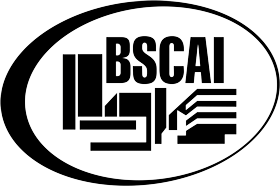
BSCAI is now offering a new, four-part Bidding and Estimating Online Course. Taught by long-time industry executives and subject matter experts Curtis McLemore and Steve Shuchat, it was modeled after a popular in-person seminar at the Contracting Success Conference. It teaches learners all about bidding and estimating, which is the detailed process for determining the price BSCs will charge a customer for a specific service or services.
Shuchat, president of Ohio-based Clean All Services Inc., said the bidding and estimating process is so important to BSCs because most are independent owners of their companies. Knowing what to charge can make the difference of thriving or going under.
“Most go out of business not because they don’t have enough revenue,” he said. “They go out of business either because their cash flow is very poor or profitability is poor and that leads to bad cash flow. The bidding and estimating process won’t always get you the business, but it will often show you what business you don’t want.”
The course is hosted on the Learning Management System (LMS), which users can access via the BSCAI website. The module provides interactivity throughout and downloadable documents for the learners to complete as they work their way through the course.
So what are the pluses of the new Bidding and Estimating Online Course? “Not having to spend an entire day with Steve and me!” joked McLemore.
The CEO of Houston-based McLemore Building Maintenance Inc., said taking the course in the comfort of your own home means BSCs can use the tool and tailor it to their lives.
“Taking it online makes the course much more convenient to fit into a BSC’s busy schedule,” said McLemore.
Shuchat concurred, adding, “It gives you time to really reflect on your own process. When you’re going through it, it shows you all of the different little details that you need to know and different perspectives on how to do things.”
Some perks of the online course are indeed the ability to take it in the comfort of your own home or office, and to set your own pace as you work your way through the curriculum. It will also provide two or three “touch-base” calls with McLemore and Shuchat regarding the content. The price for the course is $195 for BSCAI members and $395 for non-members.
When asked what are some of the common mistakes BSCs make in bidding and estimating, McLemore was quick to answer: “Too much or too little time budgeted to service a facility” and “omitting overhead costs that should be included.” The new course is designed to help with both.
There are many questions BSCs forget to ask themselves that their customers might not immediately provide; like what time do you expect the building to be cleaned, what’s the actual square footage, or where is the nearest Dumpster?
“Don’t assume that they’re going to tell you everything,” Shuchat said. “Often, they just don’t think of it all. They don’t think that their building’s Dumpster is a quarter-mile away, that it takes forever to get to it, and it’s going to add a lot of labor onto the cleaning of the account. They don’t think that the only time you can get into the human resources area to clean is between 12 p.m. and 1 p.m. on Tuesdays and Thursdays. So, if you have the whole bid wrapped around starting at 6 p.m., then it all goes out the window. It’s the contractor’s responsibility to ask the important questions.”
“Having a firm understanding of the exact costs to service a facility is the difference between a profit or a loss,” McLemore added.
In Part One of the course, the student will learn about the variables and formulas that affect production rates. Part Two will instruct the learner on how to apply production rates to his/her daily work life, also known as “workloading.” Part Three covers request for proposals, or RFPs, while Part Four tries to answer the big question: “How much will this job cost?”
Shuchat is especially enthusiastic about the first part.
“Determining production rates is where you can really make a difference,” he said. “So many people come to the class and say, ‘Give me a pre-made list of how long it should take to vacuum or how long it should take to clean at a specific rate?’ If your people aren’t trained and prepared to do that, that’s where losing money can happen. You’re bidding at 5,000 square feet an hour. But your people are trained, prepared, and ready for 3,000 square feet an hour. All of a sudden, you’ve bid an account to be cleaned in 10 hours, and it’s taking your people 14 hours. There is a lot of opportunity in production rate. But you have to do it correctly. It’s not just about working people harder to get faster work out of them. You’ve got to get the work done right and at the right pace.”

 The Down and Dirty on Cleaning in Virus Season
The Down and Dirty on Cleaning in Virus Season How Surfactant Use is Expanding in Commercial Cleaning
How Surfactant Use is Expanding in Commercial Cleaning Operational Excellence Series 2025: Labor Strategies
Operational Excellence Series 2025: Labor Strategies
